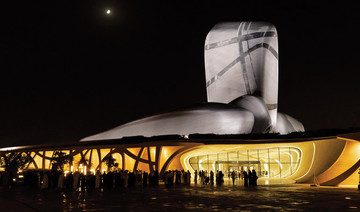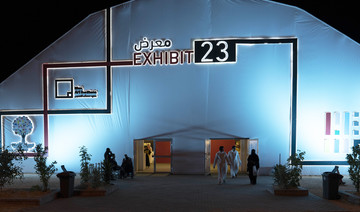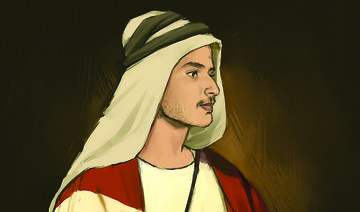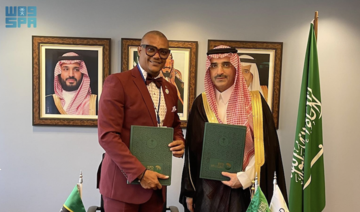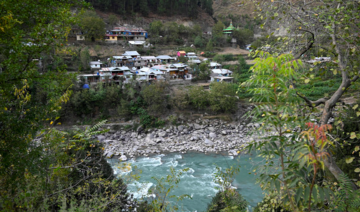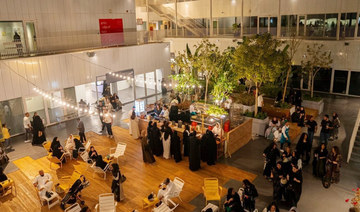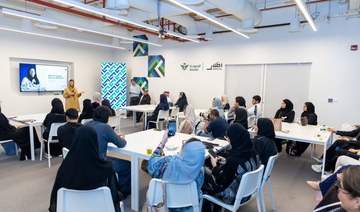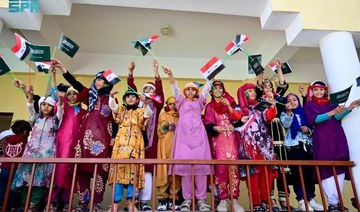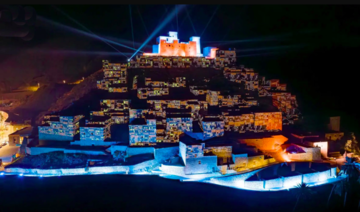JEDDAH: Athr Gallery hosted the first Saudi edition of GPP Slidefest on Thursday night. The highly popular art slideshow format took place in the city of Jeddah, and saw inspirational Saudi and regional artists and photographers display their latest creative work through intimate, personal, and powerful artistic narratives.
A contemporary art project space and gallery, Athr offers a platform for artistic dialogue between aspiring artists and their societies. They offer multiple leveled platforms for creative experimentation that includes a visual arts workshop, as well as a terrace for outdoor presentations. Thursday night’s GPP Slidefest featured Saudi artists and photographers such as Tasneem Alsultan, Nasreen Shaikh Jamal Al-Lail, Moath Alofi and Saad Tahaitah, as well as UAE photographer Ammar Al Attar.
The event was held in partnership with Gulf Photo Plus (GPP), and a part of Photography Jameel’s Autumn program. GPP is a renowned photographic organization based in Dubai, while Photography Jameel emphasizes on year-round learning and community development through the production of photography workshops, and art events. GPP Managing Director Lola Boatwright, who hosted Thursday night’s event, spoke exclusively to Arab News, and shared some of the fundamentals that GPP offer to aspiring and established photographers in the region, as well as her optimistic outlook on the impact GPP will have in the Kingdom.
“Through all of our activities we aim to raise the level of visual literacy among the photography community. We are a resource for photographers in Dubai as well as around the Gulf and abroad through our education, fine art printing, our galleries, and events such as Slidefest. In terms of our relationship with Saudi Arabia, this is quite an exciting time as this is the first time we are holding an event in Jeddah. There is a need for creative expression – an outlet, and I think photography is really an attractive way for someone to start exploring how to express themselves. So, I’m very much invested in having Gulf Photo Plus be more active in Saudi Arabia,” she stated.
The first artist highlighted at GPP Slidefest was Tasneem Alsultan. A Saudi-American photographer, her work is particularly known for highlighting gender and social issues within Saudi Arabia. She has covered local art stories in Saudi Arabia for both Vanity Fair Italy and Vogue Italia, and her photography has been featured in publications such as the New York Times Lens Blog. Tasneem’s art presentation Thursday night was an unconventionally honest wedding themed slideshow. Having photographed more than 120 weddings worldwide, she specializes in capturing what could only be described as the imperfectly perfect candid shots. In recent years, she has been selected by the British Journal of Photography as one of the 16 emerging photographers to watch.
Nasreen Shaikh Jamal Al-Lail is a Saudi-British artist based in the United Kingdom. She is the founder and director of Variant Space, an art collective that facilitates a space for Muslim women to creatively express their experiences. “The most important reason why I started it was because I wanted an honest perspective of different Muslim females. Who they are, their artwork, and their different stories and journeys all while identifying as a Muslim female — which I think is important because culture and society is different for each person, but yet being Muslim females, they feel pride in that identity,” she said.
Nasreen’s photographic artwork delves into the connection between self-identity, individual experiences, and the physical space in which these conflicts exist. Her work incorporates both a subjective and objective point of view that tells complex stories of self-identity, as well as often subtly intertwining ideas of culture, gender, religion, and politics. Her artwork Thursday evening was titled “Beyond the Veil” and tackled the question, “Who am I and what can I become” Her artwork urged viewers to reflect on how multi-faceted and fluid the concept of identity can be, and how the media can influence and reinforce stereotypes on the veil. Her art offered an honest representation of veiled women, and the cultural strength it represents.
“For me it was about presenting a different side to the story, rather than the continuous side that we hear from the media about Saudi women being different, and assuming our culture is a certain way. For me, I feel more comfortable in Saudi than the UK in general, just in terms of practicing the way I am, and people looking at me without having prejudgments on how I would be. So that was the main reason why ‘Beyond the Veil’ was created, because from a western perspective, looking at veiled women is still very limited and very narrow in a sense. We see that lately in adverts and how images of veiled women are being represented; It really undermines other women who are like me and their narratives. It’s not a representation of the wider community,” she remarked.
Saudi artist Saad Tahaitah presented a short film called “A white wave of pilgrims” that offered a deeply beautiful and intimate illustration on the journey of Hajj. The film contained a contrast of authentic sounds with imposing instrumentals that creatively captured the monumental personal journey of Hajj. The images of fully diversified pilgrims, reflected the contrast of how one can be completely disconnected with 21st century reality, while at the same time be deeply connected in a religious and spiritual sense.
The final presenter of the evening was UAE photographer Ammar Al Attar. His slideshow was titled “Reverse Moments”, which documented moments in the past that were undocumented in their inception date. Ammar visited more than 30 photo studios in the UAE where he would collect hours of video recordings, along with thousands of photo negatives. These images captured the UAE and its people in the earliest of times, uncovering the messages and tracing the stories that lay behind these undated photos.
With the aim of nurturing the grassroots movement in Saudi Arabia and the wider Gulf region, programs and events such as GPP Slidefest are providing platforms and opportunities for local and regional artists and photographers to share their personal stories and experiences through their creative artwork. This artistic structure of cultural exchange has been a part of a wider commitment from establishments such as Athr Gallery, Gulf Photo Plus, and Photography Jameel to promote cultural dialogue within Saudi Arabia and the rest of the world.
Jeddah gallery hosts first Saudi edition of ‘Slidefest’ event
Jeddah gallery hosts first Saudi edition of ‘Slidefest’ event
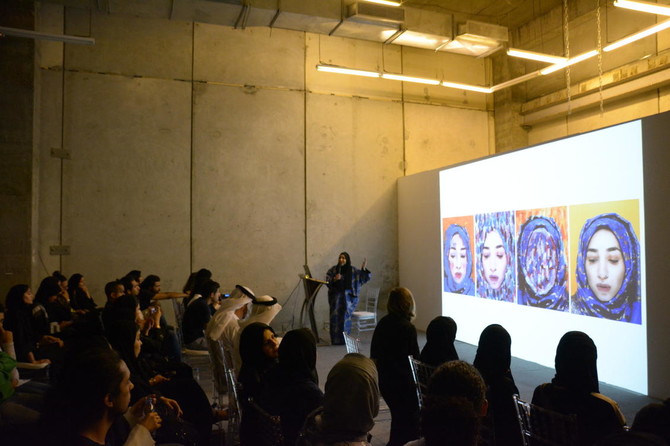
Art is ‘translating feelings,’ says 16-year-old Saudi artist
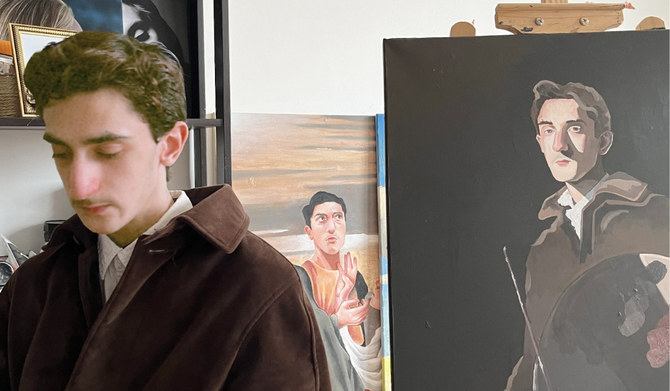
- Jawad Al-Omair has established himself as a painter, drawing inspiration from the beauty and pain surrounding him
RIYADH: While his classmates took part in sports activities, Saudi teenage artist Jawad Al-Omair daydreamed about the next time he would pick up a paintbrush or pencil to draw again.
At only 16 years of age, Al-Omair has established himself as an artist, drawing inspiration from the beauty and pain surrounding him.
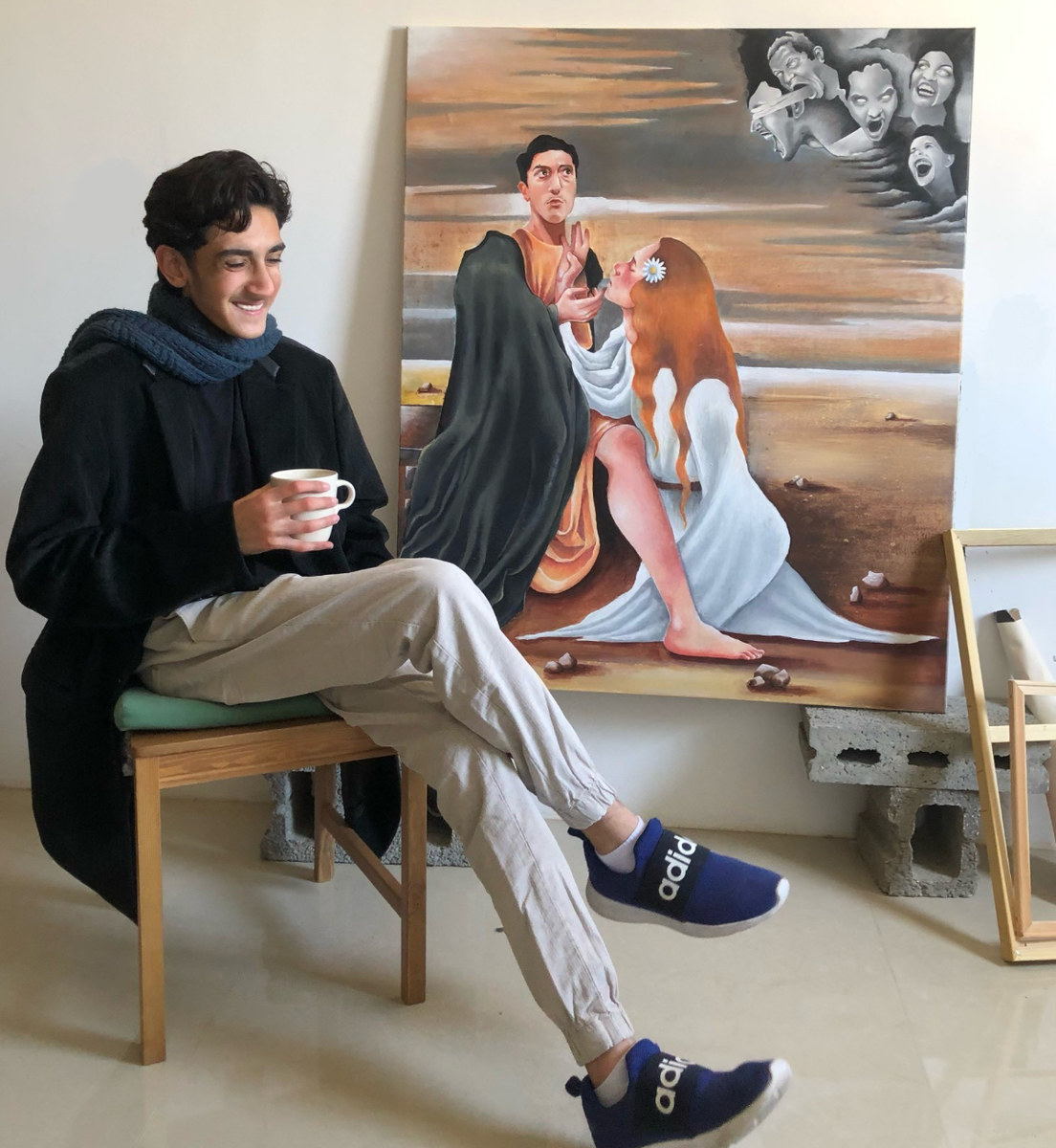
He told Arab News that his breakthrough moment came when he discovered his artistic abilities in the third grade.
“All the kids used to go to play. I always found myself opening my notebook and just drawing. I remember one day, I drew something at school, and when I got home, I showed it to everyone. I told myself, ‘I should do this more often.’”
HIGHLIGHT
Jawad Al-Omair views color as an arsenal to communicate emotion in his artworks.
He uses acrylic paint to portray his vivid ideas on canvas.
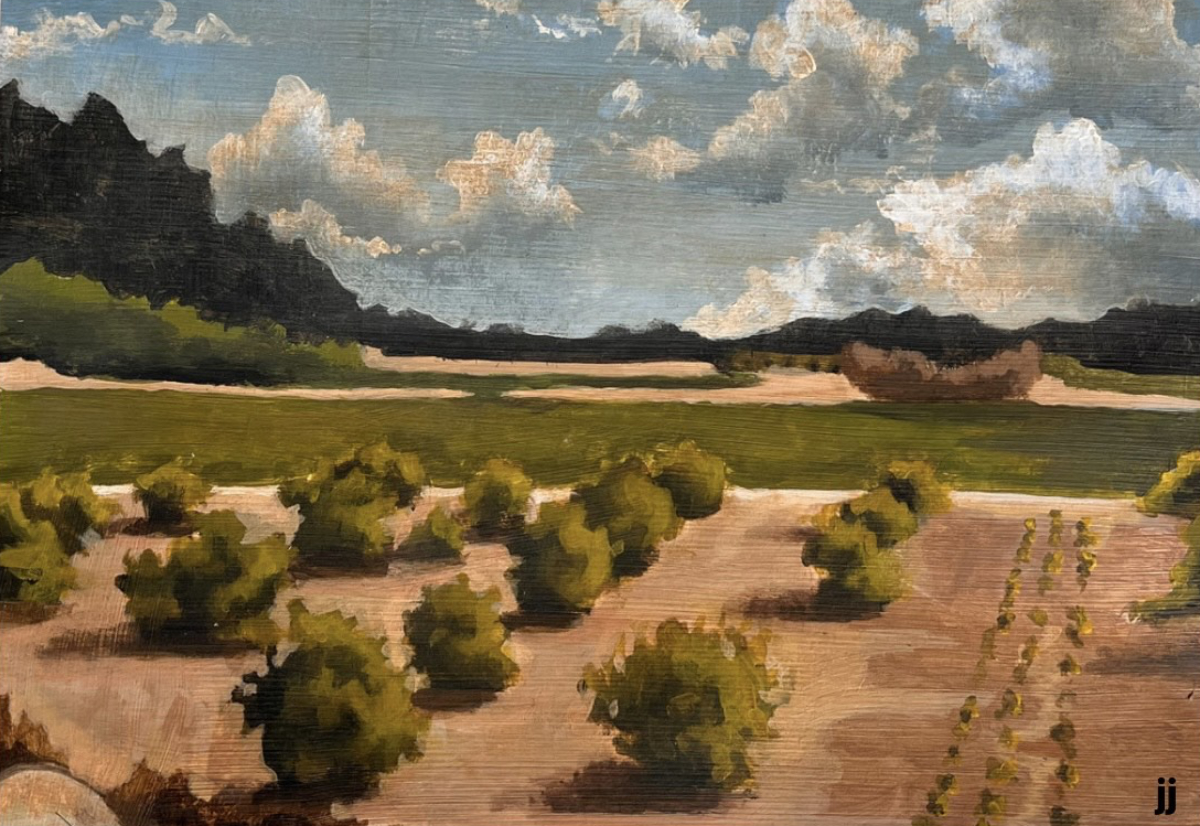
“With every painting I do, I usually have a vision of what the color palette is going to be and the composition, and most importantly what message and feeling I am trying to deliver through the painting.”
The young artist views color as an arsenal to communicate emotion in his artworks. “If I wanted to paint something that conveys the feeling of being lost, I would usually use cool toned colors like greys and blues.”
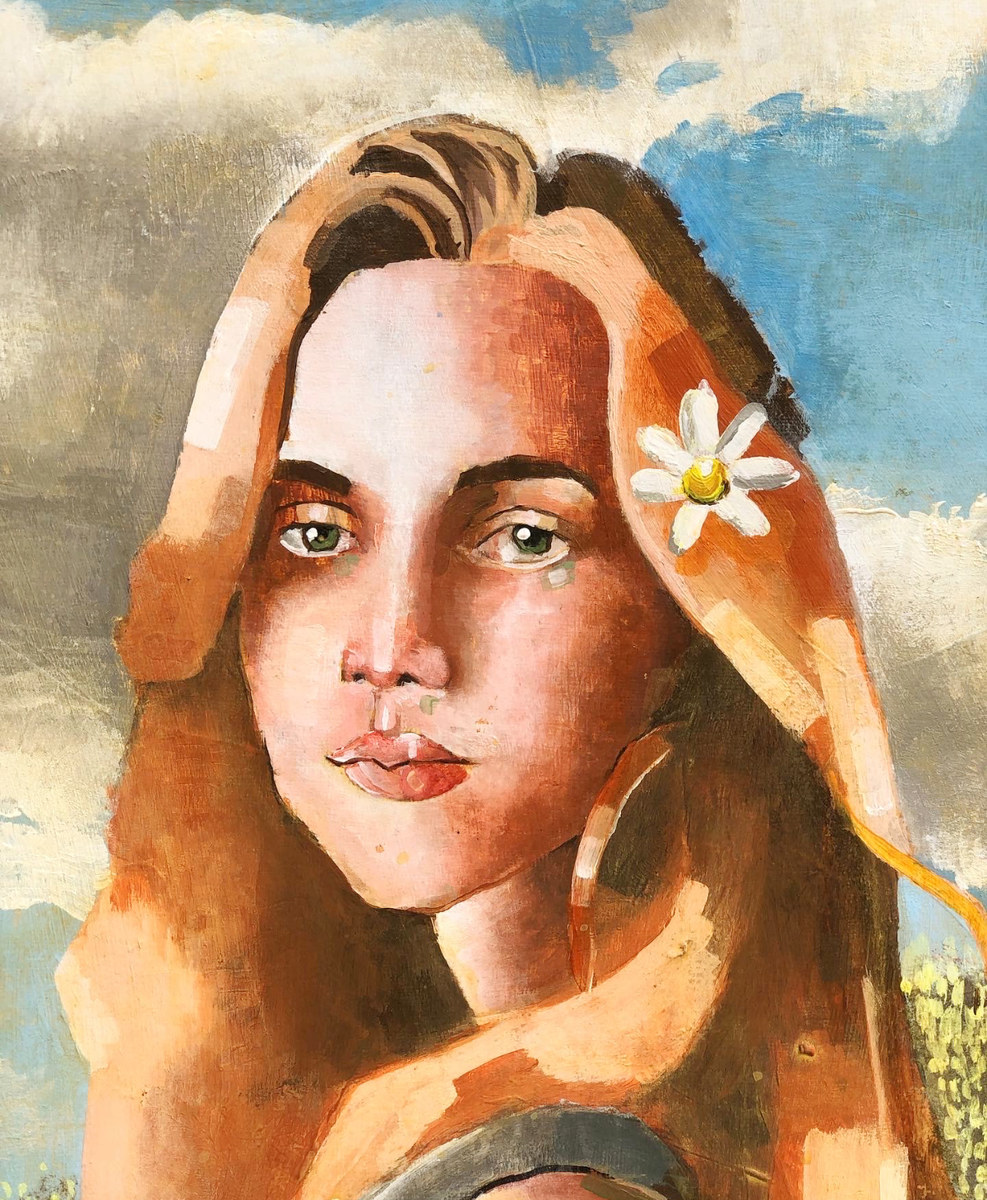
Al-Omair said that he noticed a dramatic change in his artistic abilities after being introduced to a group of local artists who taught him painting techniques to implement in his artworks.
“Dana Almasoud is one of my best friends who has helped me so much. Three years ago, I used to be a completely different artist. I used to be unable to draw small portraits, but she taught me how to. I can’t picture how my life would be if I had not met them,” he said.
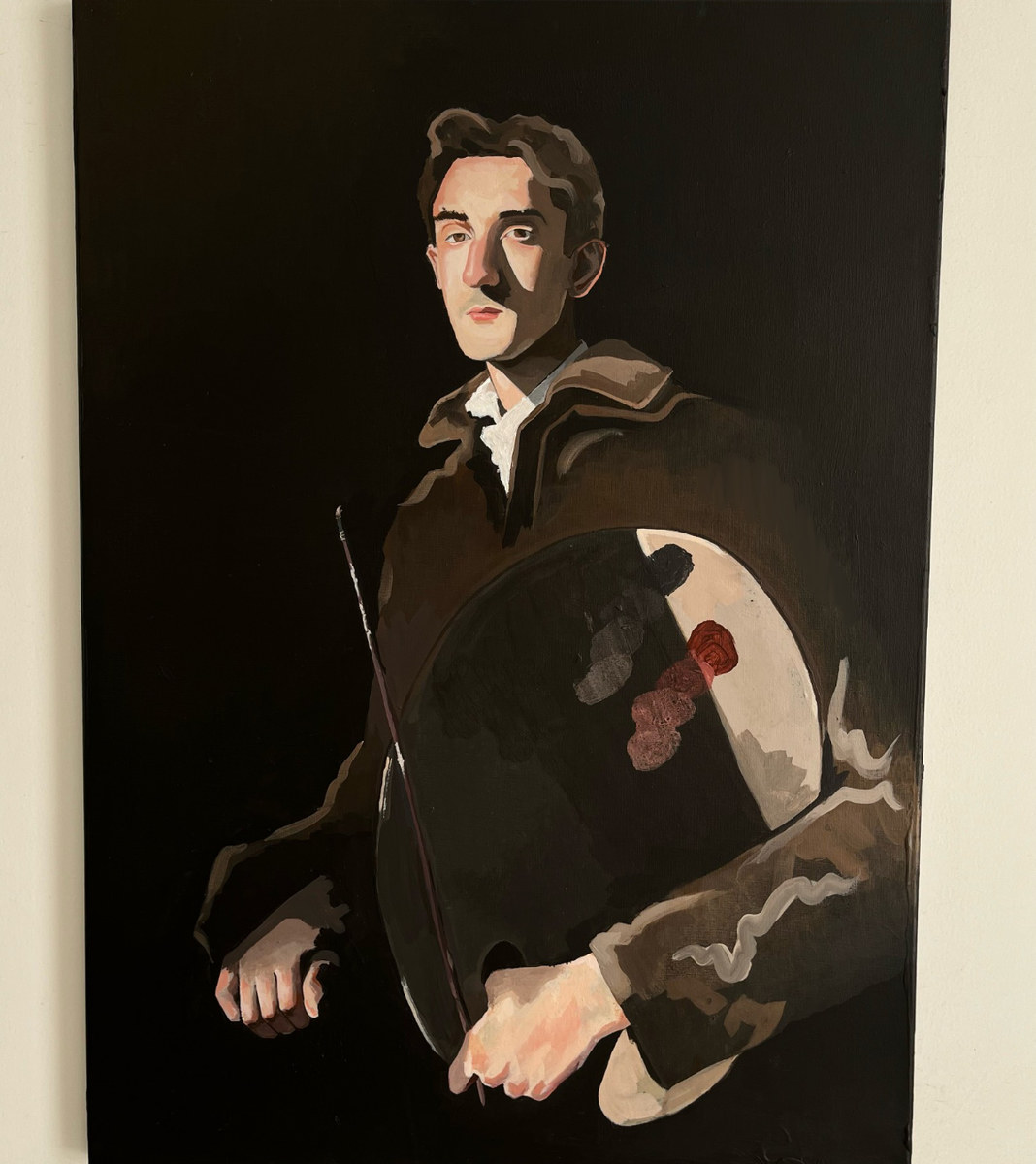
In a recent artwork, Al-Omair painted a large-scale self-portrait inspired by the style of John Singer Sargent, an American artist renowned for his portrait paintings in the late 19th and early 20th centuries.
He described Sargent as one of his favorite artists. “If you see his self-portrait, It is similar to mine. I was looking at his artwork while I was painting so I could capture that same vibe.”
It took Al-Omair about 12 hours to complete the self-portrait, which emphasizes his prominent features.
“I get commented on my nose a lot, so I painted it in the center. I wanted to immortalize my 16-year-old self, because who knows what I will look like five years from now?”
The young artist aims to turn all sorts of experiences — even those of friends or family members — into art.
“How would life be if we did not have music or anything beautiful to look at? When you think of an artist, people usually imagine someone with a brush, but it is much bigger than that.
“Art is translating feelings with a certain skill. Movies taught humanity so much because you get to learn about people. Writing, songs and music are emotional things that we share. Art is one of the most important parts of life. Everyone has an artistic side to them that they may have not found yet,” he said.
Saudi development fund agrees $50m loan deal with St. Vincent and the Grenadines
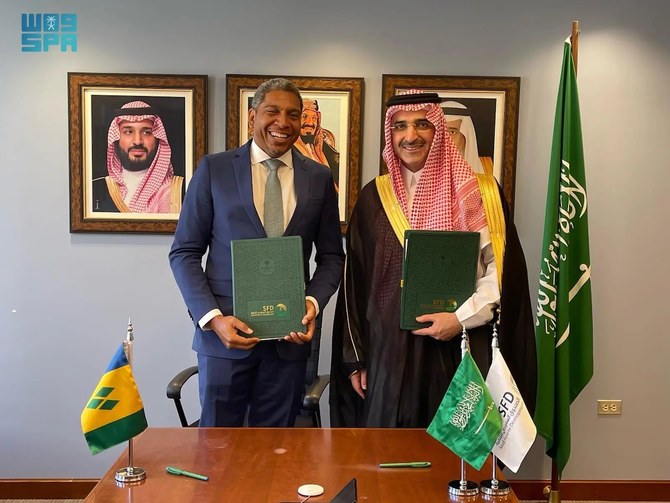
- Funding will help rebuild and repair facilities damaged by natural disasters in the Caribbean island nation
RIYADH: The Saudi Fund for Development signed a $50 million loan agreement with St. Vincent and the Grenadines on Friday to assist communities affected by natural disasters, Saudi Press Agency reported.
The deal was signed by SFD CEO Sultan Abdulrahman Al-Marshad and Camillo Gonsalves, finance minister of St. Vincent and the Grenadines, during the 2024 spring meetings of the World Bank and the International Monetary Fund in Washington.
According to the World Bank, the southern Caribbean nation faces a host of natural threats, including floods, hurricanes, droughts, landslides, and volcanic eruptions.
The agreement will fund a project to rebuild and repair buildings and facilities damaged by natural disasters in the island nation.
This initiative includes the restoration and construction of essential infrastructure, such as housing, healthcare, educational, and sports facilities, aimed at boosting their durability and resilience against future disasters and climate change impacts.
The project will also include establishing four healthcare centers, building primary and secondary schools, renovating government buildings, and restoring homes damaged by volcanic activity.
The loan is in line with the SFD’s commitment to supporting vulnerable communities around the globe.
Since its inception in 1975, the Saudi fund has financed over 800 development projects and programs worldwide, with total funding exceeding $20 billion.
Art Jameel announces open call for Hayy Jameel Facade Commission

- Antonia Carver, director of Art Jameel, said: “At Art Jameel, we are committed to fostering the role of the arts in public life
JEDDAH: The Hayy Jameel Facade Commission is inviting new and established artists in Saudi Arabia to reimagine the facade of the Hayy Jameel art building in Jeddah.
In its fourth year and third open call process, the commission will select a winning artwork that serves as conversation starter between the complex, the community it serves and the broader public.
Antonia Carver, director of Art Jameel, said: “At Art Jameel, we are committed to fostering the role of the arts in public life.
“Through this annual commission which positions the facade as the first point of contact with the Hayy Jameel community, we are providing a platform that propels mid-career artists forward and challenges them to produce a large-scale, highly imaginative work that remains in-situ, front and center in Jeddah, for around 10 months.”
The commission encourages artists to consider the site-specific nature of the project and the technical requirements of a public work.
Sustainability considerations are also appreciated in managing the carbon footprint of the artwork and its installation.
Eligibility is open to all Saudi and Saudi-based artists and collectives, with at least one member required to be a Saudi citizen or resident if applying as a collective.
The commissioned artists will receive a work fee and a production budget managed by Art Jameel.
The jury, consisting of local and international art professionals, curators, artists and museum directors, will select a single work for production.
Applicants are required to submit a concept statement (200-500 words), up to four sketches and diagrams, and an estimated production schedule through the application portal.
The deadline for the facade submission has been extended to May 1, with the launch scheduled for October. Following the unveiling, there will be a public viewing period from October 2024 to September 2025.
Previous works displayed on the building have showcased the talent of artists such as Nasser Al-Mulhim, Tamara Kalo, Mohammad Al-Faraj and Dr. Zahrah Al-Ghamdi.
Saudi universities participate in Geneva’s International Exhibition of Inventions
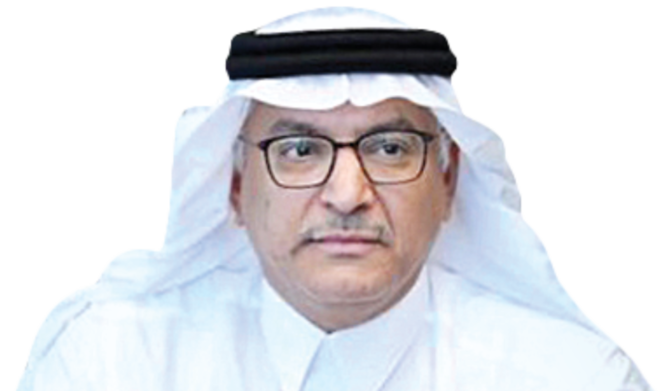
- More than 1,000 inventions from over 40 countries showcased at event
RIYADH: Mohammed Al-Sudairi, the Saudi deputy minister of education for universities, research and innovation, opened the Kingdom’s pavilion at the 49th Geneva International Exhibition of Inventions.
Some 26 Saudi Arabian universities are taking part at the event — including 19 government universities, two independents and five private bodies — and a total of 113 inventions have been produced, in scientific, theoretical, medical, and biological specializations, the Saudi Press Agency reported.
Among the universities taking part is Qassim University, which is showcasing a display that highlights innovations and several inventions.
Abdulaziz bin Bani Alharbi, a faculty member at Qassim’s College of Agriculture and Food, said that the college was showcasing a patent registered with the Saudi Authority for Intellectual Property: a method for desalinating salt water using a halophyte plant.
He said the invention involved introducing water and placing the plant in a closed system that allowed the collection of water from the plant after the transpiration process.
Alharbi added that gas exchange followed and then desalination to obtain salt-free water.
Fahad Alminderej, a faculty member at the College of Science, said his group had obtained a patent for extracting materials from date waste, and was then using them in pharmaceutical manufacturing in an innovative manner. This patent had also been registered with the Saudi Authority for Intellectual Property.
Abdullah Almohaimeed, the head of the Innovation Center and Intellectual Property at the university, said that Qassim was participating in the exhibition as part of the Ministry of Education’s initiative to enhance the international presence of Saudi universities, in line with national objectives.
He added that the university’s participation aimed to highlight its role in supporting the innovation system and entrepreneurship, as well as showcase many inventions.
The exhibition, which is taking place until April 21, is displaying more than 1,000 inventions from over 40 countries. Some 800 exhibitors are featured at the event and 30,000 visitors are expected to attend, in addition to 650 journalists.
It is the world’s largest annual event devoted exclusively to invention.
Al-Baha’s monuments: A pivotal testament to civilizational advancement
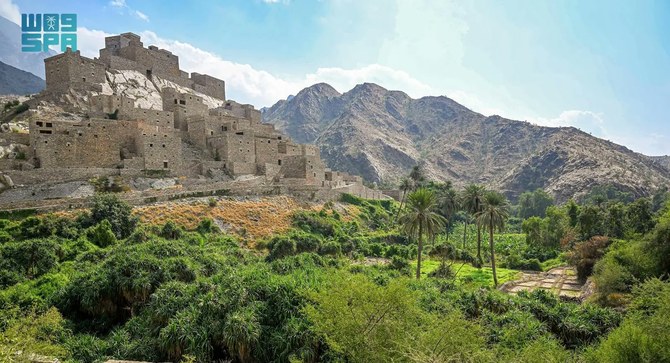
- Characterized by intricate designs, the residential buildings, castles, and forts embody a harmonious fusion of environmental adaptability and cultural resonance
RIYADH: Nestled in Al-Baha region in southwestern Saudi Arabia lies a treasure trove of ancient architecture in the quaint villages that dot its landscape.
Characterized by intricate designs, the residential buildings, castles, and forts embody a harmonious fusion of environmental adaptability and cultural resonance.
Crafted with precision, these structures seamlessly integrate with the rugged terrain and fluctuating climate, while also paying homage to the long-standing customs and traditions of ancient Arab society.
Seventy-three-year-old Mohammed bin Salem Al-Ghamdi told Saudi Press Agency: “For decades, I have dedicated myself to the craft of stone house construction.”
Currently, he and his companions are diligently crafting a stone room, employing stones as their primary building material. Together, as a cohesive team of builders, craftsmen, and eager participants, they collaborate harmoniously to bring their vision to life. He described it as both a hobby and inheritance passed down through generations.
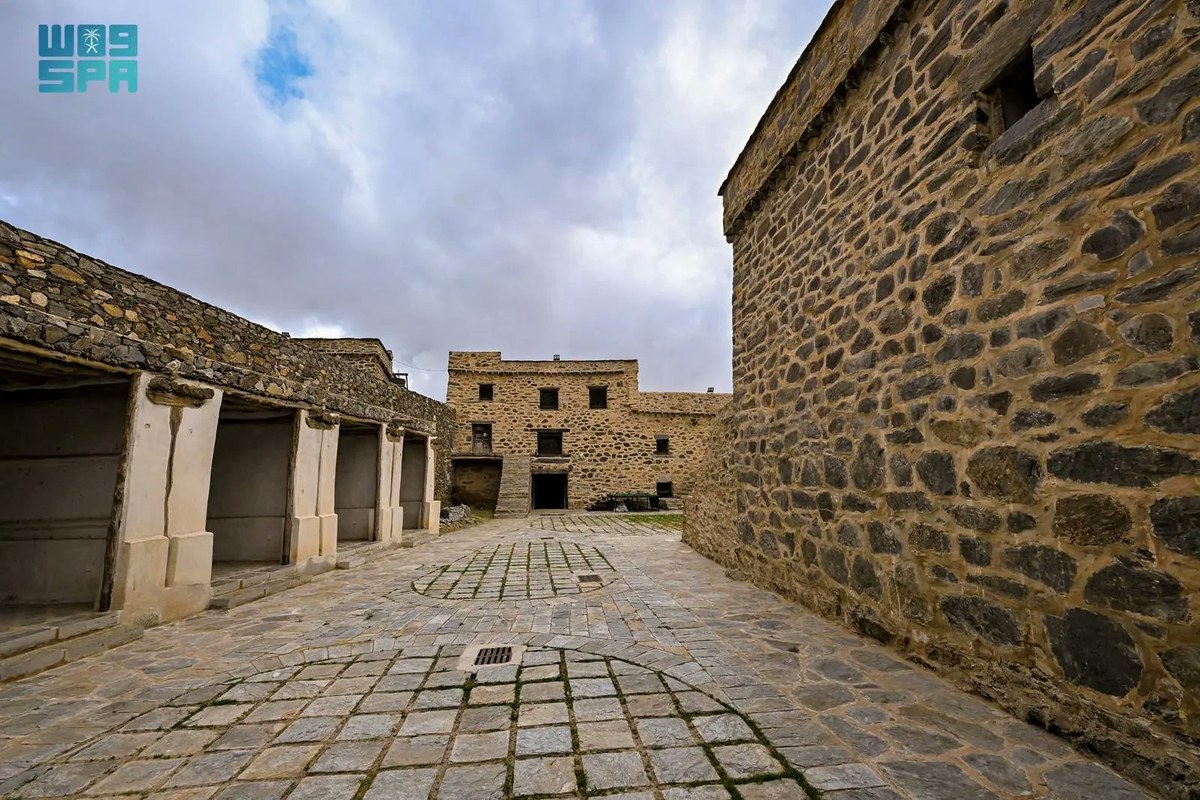
“In every construction endeavor, we rely on what’s known as the cornerstone, strategically positioned at the room’s corners. Additionally, a lengthy stone, referred to as the ‘link,’ is essential for connecting each stone within the structure. We also use sturdy stones known as ‘Al-Mateen’ or ‘Al-Daher’ to fortify the room’s foundation.
“Moreover, we meticulously place ‘Al-Lazza’ stones, tiny yet significant, within the larger stones, ensuring a seamless fit without any gaps or openings in the room’s structure,” he added.
“Once the corners are meticulously stacked and leveled, I proceed to roof the room with wood. This involves utilizing a series of wooden beams cut to specific lengths to interconnect all corners of the room. Next, I scatter small plants across the wooden framework to fully cover the ceiling, upon which clay is applied to secure the structure. This method ensures durability against erosion and rainfall, further reinforced by specific paving techniques.”
Al-Ghamdi emphasized the importance of post-construction plastering with clay, which not only gives the interior an earthy tone but also regulates the temperature — ensuring warmth in winter and coolness in summer.
He mentioned the practical use of juniper trees for doors and windows, facilitating easy replacement and serving a dual purpose in construction.
Dr. Abdulaziz bin Ahmed Hanash, professor of urban design at Al-Baha University, highlighted the profound significance of human construction in Al-Baha region, portraying it as a living chronicle of urban civilization’s evolution over time.
He underscored the traditional architecture and urban legacy of Al-Baha as foundational elements, inherently distinguishing the region. With its wealth of historical landmarks spanning the Sarat and Tihamah regions, the area has gained the attention of state authorities, who aim to nurture its potential as both a summer and winter tourism hotspot through strategic development initiatives.





